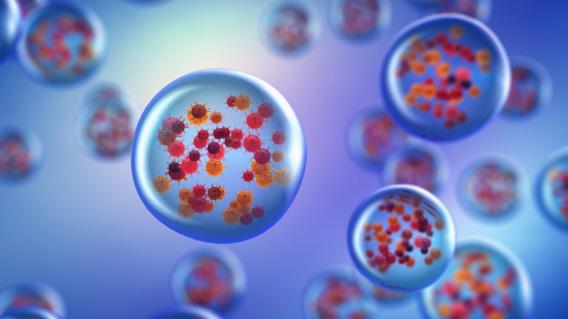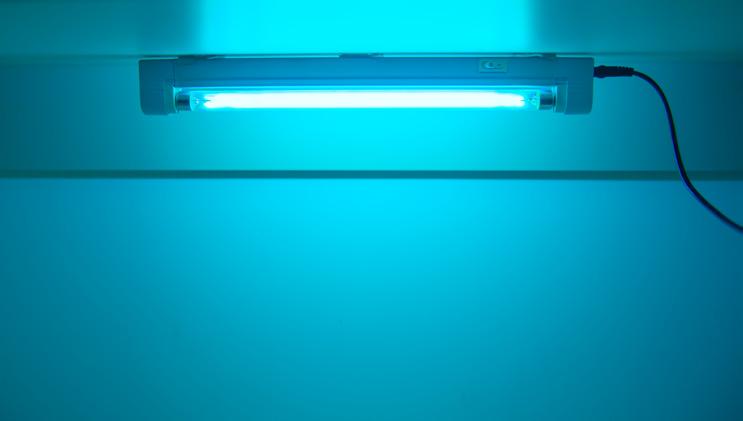
6 minute read
Air conditioning and infections The role of IAQ
The pandemic has demonstrated the importance of facilities in reducing the risk of infection, as long as they are properly designed and managed
In the early days of the Covid-19 pandemic, there was much talk, and not always rightly so, about the role that air conditioning and ventilation systems can play in combating or, conversely, spreading pathogens, often providing incorrect information and going so far as to propose extreme solutions such as shutting down systems. From a technical point of view, it has been established that ventilation, air exchange, and filtration help reduce the concentration of viruses in the air and thus the risk of transmission (as long as these systems are well managed). Conversely, unconditioned spaces can cause thermal stress and, especially in weaker individuals, reduce resistance to infection. In general, therefore, experts say that turning off air conditioning and ventilation systems is not a recommended measure to reduce virus transmission. One thing is certain, however: this emergency places a responsibility on all those in the construction industry to implement HVAC systems that are capable of ensuring high indoor air quality (IAQ) and thus a positive effect on health. Combining the two imperatives of better air quality and ever-higher energy efficiency will be the biggest challenge of the future of plant engineering, although, it is worth remembering, there is no single solution, but many different solutions, declined according to the most suitable schemes for each different type of user.
The issues of ventilation systems
Ventilation, natural or forced, is seen by most people as necessary for physiological air exchange, to breathe fresh air. In reality, the concept of indoor air quality (IAQ) also associated with the purity of the air inside buildings, which must be free or nearly free of contaminants of various kinds that can cause discomfort or health damage, including microorganisms such as insects, bacteria, and viruses, is unknown to many people. One of the strategies for achieving good IAQ is the induction of outside air (ventilation) in order to dilute pollutants: in fact, the greater the flow of outside air, the lower the concentration of the pollutant in the environment. Since natural ventilation is not constant and unreliable, because it is linked to statistical trends in external environmental variables (climate), it is better to ventilate using a ventilation system or an air conditioning system equipped with ventilation, increasing the flow rates of outside air, that is, the amount of air that the system takes from the outside and injects into the closed environment. In fact, as a rule, the conditioned air fed into rooms consists of a mixture of outside air and "recirculated" air, i.e., taken from the indoor environment, passed through a filter, and fed back into the air-handling machine (AHU, air handling unit), where it is mixed with the outside air, cooling it (in summer) or heating it (in winter). This reduces the need for the heating power that the system must provide to bring it to the desired conditions. It has now been shown that mechanical ventilation contributes to the reduction of the risk of contagion (over large distances) in enclosed rooms, and therefore it is necessary to ensure that there is more ventilation with outside air by increasing, where possible, the number of hourly changes, and by closing (in cases where it is required) the recirculation of air, while also implementing an appropriate maintenance program. It should be noted, however, that the performance of a ventilation system (natural or forced) cannot be expressed solely through air flow rate or air change rate. In fact, for the same values, by varying the location and size of the air distribution and intake network, different modes of pollutant removal can be achieved.
Air conditioning without ventilation
Not all air conditioning systems (i.e., those that control temperature and humidity of the indoor environment) are equipped with the ventilation function (all-air systems or primary air and local terminals). The advantage of mechanical ventilation, either dedicated or included in the air conditioning system, lies in the possibility of filtering the outside air fed into the room. These systems, usually used for the air conditioning of large common spaces, such as supermarkets, must operate with as much outside air as possible compatible with the characteristics of the system itself, possibly eliminating recirculation of indoor air. If the system is not equipped with ventilation, the system works, if air-cooled, with total internal recirculation: it draws air from the indoor environment, cools or heats it, and returns it to the same environment, a mode, this, characteristic of all air conditioning systems called split, fan coil, cabinet, ceiling or ducted. In this case, depending on whether the system serves a single room or several rooms, multiple scenarios can be configured, for which we refer to expert advice [AiCARR (2020), Handbook on the role of winter and summer air conditioning systems in reducing the spread of COVID-19].
Air filtration
Filtration plays an essential role in controlling and maintaining acceptable levels of contamination. With the use of high-efficiency filtration systems, proper air exchange is ensured as new, filtered air is brought in, allowing polluted air to be expelled and also providing protection against fine particulate matter (PM10 and PM2.5) and microorganisms. The filtration system can be placed exclusively on the outside air intakes (Outside Air Treatment), especially in the case of particularly polluted outdoor environments; or it can be used to create bypass zones within the ventilation duct system (Partial Supply Air Treatment). This system is valuable when indoor and outdoor pollutant concentrations are known and the level of concentration reduction required is otherwise modest and easily manageable. Best results are obtained in systems where there is the installation of appropriate filtration systems on any recirculation points (allowed before Covid-19 emergency) and above appropriate bypass systems (Full Supply Air Treatment). The filters are characterized by:
- the arrested fraction of particulate pollutant (efficiency);
- the airflow pressure drops during the crossing;
- the time interval between maintenance (filter replacement or cleaning).
Other methods of reducing infections

All-air systems without recirculation pose no problems for the risk of airborne infection. In fact, outside air, considered uninfected, is filtered normally with filters appropriate to the building and then distributed to the rooms through an aeraulic network. On the other hand, systems that, for reasons essentially due to energy conservation, recirculate indoor air with subsequent mixing with fresh outdoor air may present a greater risk of airborne contagion. In this case, it is necessary to insert bactericidal devices and UV lamps to eradicate the vi- rus present in the aerosol. In the event that it is not possible to do so, current regulations require that the recirculation damper be closed so that the system operates on outside air only. For centralized systems, antibacterial filtration of AHUs (Air Handling Units) can be carried out for both air conditioning and central ventilation systems. Today, complete filtration kits, UV bactericidal systems, and bacterial and/or viral control systems have been put on the market. The UV radiation that has been shown to be effective in killing microorganisms is UV-C. The rays emitted by UV-C germicidal lamps have a wavelength centered on 254 nm which corresponds to the frequency of maximum germicidal effect, which allows 97% of 0.1 micron diameter particles and 95% of 1 micron diameter particles to be inactivated. Filtration by photovoltaic effect is based on the production of positive and negative ions that, in the presence of moisture in the air, produce hydrogen peroxide (H 2O2), which attacks and decomposes organic material. The effectiveness of this device has been verified for bacteria (legionella), influenza and SARS viruses, and others already known. Last June 2020, studies at the University of Milan La Statale demonstrated the destructive efficacy of UV-C rays with a wavelength of 254 nm against molecular DNA and RNA binding of viruses, including the SARS-CoV-2 virus. UV lamps that can be inserted anywhere in the air duct are also available, and there are commercially available fan coils equipped with a UVC germicidal lamp with a photo-catalytic sanitizing effect.

Filtration by photovoltaic effect is based on the production of positive and negative ions that, in the presence of moisture in the air, produce hydrogen peroxide (H 2O2), which attacks and decomposes organic material. The effectiveness of this device has been verified for bacteria (legionella), influenza and SARS viruses, and others already known. Last June 2020, studies at the University of Milan La Statale demonstrated the destructive efficacy of UV-C rays with a wavelength of 254 nm against molecular DNA and RNA binding of viruses, including the SARSCoV-2 virus. UV lamps that can be inserted anywhere in the air duct are also available, and there are commercially available fan coils equipped with a UVC germicidal lamp with a photo-catalytic sanitizing effect.
(Article published on Casa&Clima n. 91)






